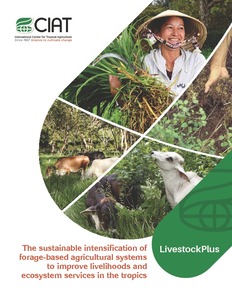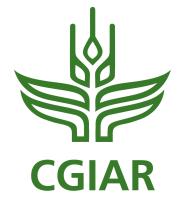Resource information
As global demand for livestock products (such as meat, milk, and eggs) is expected to double by 2050, necessary
increases to future production must be reconciled with negative environmental impacts that livestock cause. This
paper describes the LivestockPlus concept and demonstrates how the sowing of improved forages can lead to the
sustainable intensification of mixed crop–forage–livestock–tree systems in the tropics by producing multiple social,
economic, and environmental benefits. Sustainable intensification not only improves the productivity of tropical
forage-based systems but also reduces the ecological footprint of livestock production and generates a diversity of
ecosystem services (ES), such as improved soil quality and reduced erosion, sedimentation, and greenhouse gas
(GHG) emissions. Integrating improved grass and legume forages into mixed production systems (crop–livestock,
tree–livestock, crop–tree–livestock) can restore degraded lands and enhance system resilience to drought and
waterlogging associated with climate change. When properly managed tropical forages accumulate large amounts
of carbon in soil, fix atmospheric nitrogen (legumes), inhibit nitrification in soil and reduce nitrous oxide emissions
(grasses), and reduce GHG emissions per unit livestock product.
The LivestockPlus concept is defined as the sustainable intensification of forage-based systems, which is based
on three interrelated intensification processes: genetic intensification – the development and use of superior
grass and legume cultivars for increased livestock productivity; ecological intensification – the development and
application of improved farm and natural resource management practices; and socio-economic intensification
– the improvement of local and national institutions and policies, which enable refinements of technologies
and support their enduring use. Increases in livestock productivity will require coordinated efforts to develop
supportive government, non-government organization, and private sector policies that foster investments and
fair market compensation for both the products and ES provided. Effective research-for-development efforts that
promote agricultural and environmental benefits of forage-based systems can contribute towards implemention of
LivestockPlus across a variety of geographic, political, and socio-economic contexts.



